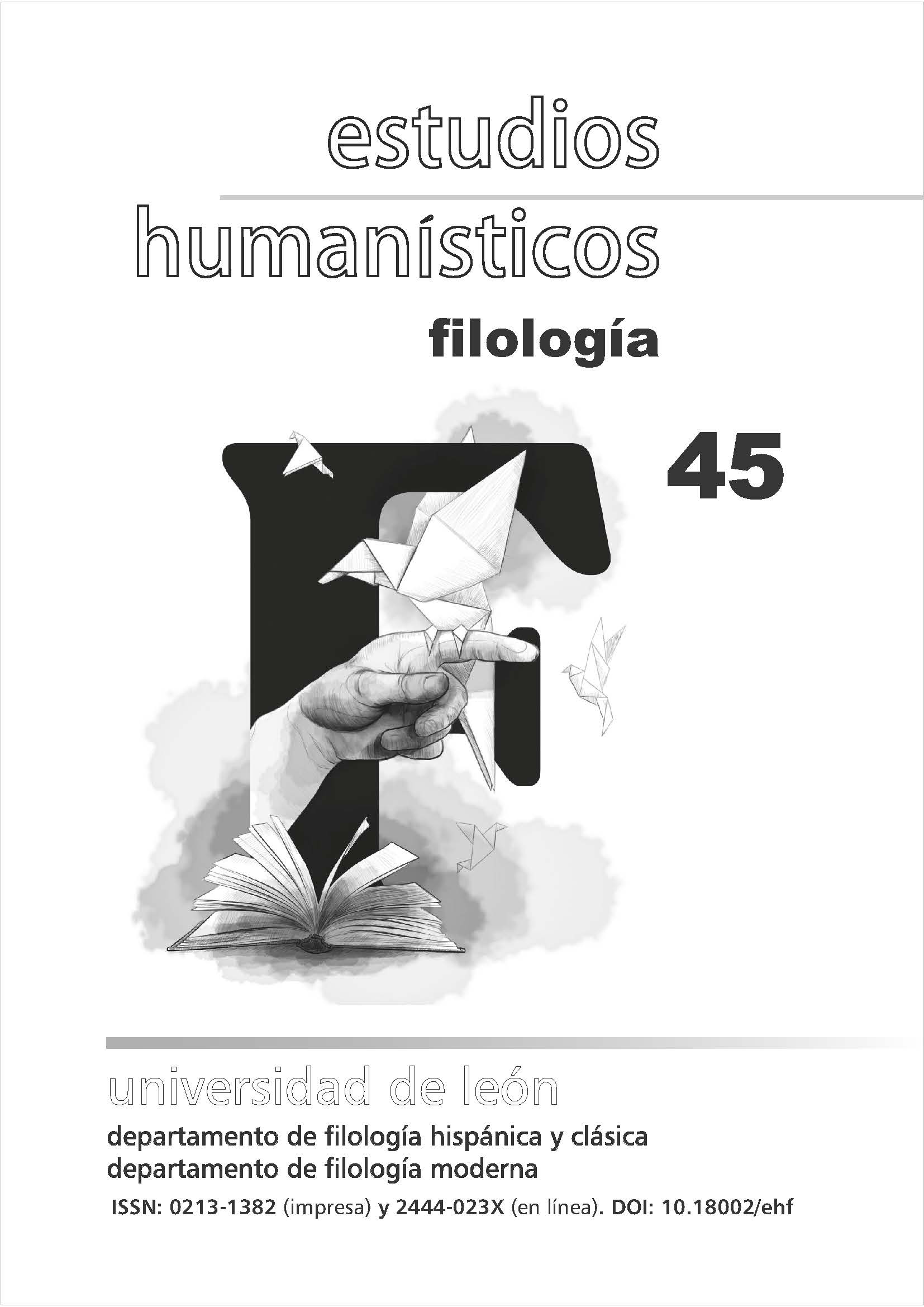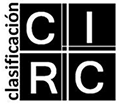Elements of Gothic Literature in the Film Edward Scissorhands by Tim Burton
DOI:
https://doi.org/10.18002/ehf.i45.7688Keywords:
Gothic literature, fantasy films, monster, otherness, Tim Burton, Edward Scissorhands, FrankensteinAbstract
Edward Scissorhands (1990), by artist and film-maker Tim Burton, is a modern fable about an unfinished, misunderstood creation that is rejected by society. This article analyzes such concepts as well as how Burton, through symbolic film code and intertextuality, reinterprets different key traits and signature topics of the Gothic genre in his most personal and critically acclaimed film.
Downloads
Métricas alternativas
References
Aguirre, M. (2007): “Narrative Structure, Liminality, Self-Similarity. The Case of Gothic Fiction”, en Gothic Horror: A Guide for Students and Readers, Basingstoke, Palgrave Macmillan: 226-247.
Baecque, A. de (1995): “D'entre les morts: les cadavres vivants du jeune cinéma américain”, Les Cahiers de la Villa Gillet, Paris, Circé.
Baecque, A. de (2005): “Les corps des écrans”, Histoire du corps: volumen III, Paris, Seuil.
Baecque, A. de ([2010] 2011). Tim Burton, Paris, Cahiers du cinéma Sarl.
Balló, J. y Pérez, X. (1997): La semilla inmortal. Los argumentos universales en el cine, Barcelona, Anagrama.
Bann, S. (1994): Frankenstein, Creation and Monstrosity, London, Reaktion.
Barthes, R. ([1966] 1972): Crítica y verdad, Siglo XXI, Buenos Aires.
Bassa, J. y Freixas, R. (1993): El cine de ciencia ficción: una aproximación, Barcelona, Paidós, 66-79.
Bellemin-Noël, J. (1971): “Des formes fantastiques aux temes fantasmatiques”, Littérature, 2, 103-117. https://doi.org/10.3406/litt.1971.2515
Bernoussi, M. (2004): Le Roman noir dans le seconde moitié du XVIII siècle, Paris, Presses de la Sorbonne nouvelle.
Bourguignon, T. (1991): “Edward l'ermite”, Positif, 364.
Burton, T. ([1990] 2001): Edward Scissorhands, USA, Twentieth Century Fox Home Video.
Calleja, S. (2002): “Los otros. Desdichados monstruos”, Reseña, 336.
Carroll, N. (1982): “The Future of Allusion: Hollywood in the Seventies (And Beyond)”, October, 20, 51–81.
Carroll, N. (2005) [1990]: The Philosophy of Horror: Or, Paradoxes of the Heart, London, Routledge.
Clark, T., Royle, N. et al. (2001): “Explanations, Applications and Orientations”, Monstrism (Issue of Experimental Criticism), en Oxford Literary Review, 23, 5–31.
Cohen, J. J. (1996): Monster Theory: Reading Culture, Minneapolis, U of Minnesota Press.
Costa, J. (1991): “Eduardo Manostijeras. Avon llama a las puertas del cielo”, Dirigido por…, 190, 26-29.
Cranston, M. (1994): The Romantic Movement, New Jersey, Blackwell.
Erle, S. y Hendry, H. (2020): “Monsters: Interdisciplinary Explorations In Monstrosity”, en Humanities & Social Sciences Communication, https://www.nature.com/articles/s41599-020-0428-1 (Consultado en junio de 2023).
Escuder, P. E. (2008) “Tim Burton y el expresionismo”, en Frame: revista de cine de la Biblioteca de la Facultad de Comunicación, https://biblus.us.es/fama2/com/frame/frame3/estudios/1.1.pdf (Consultado en mayo de 2023).
Fabre, J. (1992): Le Miroir de socière, essai sur la littérature fantastique, Paris, José Corti.
Fecé, J. L. (1991): “El monstre i la senyora Avon”, Barcelona, Diari de Barcelona.
Foucault, M. (1999): Les anormaux. Cours au Collège de France. 1974-1975. París, Seuil/Gallimard.
Halberstam, J. (1995): Skin Shows: Gothic Horror and the Technology of Monsters, Durham, Duke University Press.
Heredero, C. F. (1991): “Entrevista a Tim Burton”, Dirigido por, 190.
Hilario Rodríguez, J. (2006): Tim Burton, Madrid, Ediciones JC.
Hock-Soon Ng, A. (2004): Dimensions of Monstruosity in Contemporary Narratives. Theory, Psychoanalysis, Postmodernism, Nueva York, Palgrave MacMillan.
Jensen, K. B. y Jankowski, N. W. (1993): Metodologías cualitativas de investigación en comunicación de masas, Barcelona, Bosch.
Jordan, M. E. (1998): La narrativa fantástica, Madrid, Iberoamericana.
Kracauer, S. (1989): Teoría del cine, la redención de la realidad física, Barcelona, Paidós.
Lemercier, S. (2002): Les Plaisirs de la peur: esthétique gthique et fantastique dans le roman noir, Paris, Presses de la Sorbonne nouvelle.
Losilla, C. (1993): El cine de terror. Una introducción, Barcelona, Paidós.
Losilla, C. (2003): La invención de Hollywood. O cómo olvidarse de una vez por todas del cine clásico, Barcelona, Paidós.
Lowe, S. (2005): ”Frankenstein: A Mix of the Gothic and the Romantic”, https://loweperson.tripod.com/literaryanalysis/frankenstein.htm (Consultado en mayo de 2023).
Marcos Arza, M. (2004): Tim Burton, Madrid, Cátedra.
Paniego Lozano, J. (2004): Eduardo Manostijeras, Barcelona, Libros Dirigido.
Pisanty, V. (1995): Cómo se lee un cuento popular, Barcelona, Paidós.
Prieto, B. (2022): “Tim Burton y Álex De la Iglesia, cara a cara: "Mi niñez fue la típica, por eso me atraían los monstruos"”, El Español, https://www.elespanol.com/series/cine/20221001/tim-burton-alex-iglesia-cara-atraian-monstruos/707179468_0.html (Consultado en mayo de 2023).
Radcliffe, A. (1826): “On the Supernatural in Poetry”, New Monthly Magazine and Literary Journal, 16, 145-152.
Roas, D. (2019): “The Postmodern Fantastic Monster: Between Anomaly and Domesticatio”, Revista de Literatura, 81: 161, 29–56. https://doi.org/10.3989/revliteratura.2019.01.002
Roas, D. (2011). Tras los límites de lo real. Una definición de lo fantástico, Madrid, Páginas de Espuma.
Salisbury, M. ([1995] 2006): Burton on Burton, Londres, Faber & Faber.
Sánchez Navarro, J. (2000): Tim Burton. Cuentos en Sombras, Barcelona, Glenat.
Sedgwick, E. K. (1986): The Coherence of Gothic Conventions, London, Routledge.
Shelley, M. ([1818] 1993): Frankenstein. Or, the Modern Prometheus, Ware, Wordsworth Editions.
Skal, D. J. (1993): The Monster Show: A Cultural History of Horror, Nueva York, Norton.
Smith. A. (2016): The Cambridge Companion to 'Frankenstein', Cambridge, Cambridge University Press.
Spencer, J. (1989): The Rise of Woman Novelists: From Aphra Behn to Jane Austen, New York, Blackwell.
Sutton, C. (2017): “El cine de Tim Burton, un cine de culto”, El espectador imaginario, https://www.elespectadorimaginario.com/el-cine-de-tim-burton-un-cine-de-culto/#_ftnref3 (Consultado en mayo de 2023).
Downloads
Published
How to Cite
Issue
Section
License
Copyright (c) 2023 ELENA CANIDO MUIÑO

This work is licensed under a Creative Commons Attribution-NonCommercial-ShareAlike 4.0 International License.
Los autores o autoras que publican en esta revista están de acuerdo con los siguientes términos:
- Los autores o autoras conservan los derechos de autoría de su trabajo y ceden de forma no exclusiva los derechos de explotación (reproducción, distribución, comunicación pública, transformación) a la Universidad de León, por lo que pueden establecer, por separado, acuerdos adicionales para la distribución no exclusiva de la versión de la obra publicada en la revista (por ejemplo, alojarlo en un repositorio institucional o publicarlo en un libro), con un reconocimiento de su publicación inicial en esta revista.
- Este trabajo se encuentra bajo la Creative Commons Attribution-NonCommercial-ShareAlike 4.0 International License. Puede consultarse desde aquí la versión informativa y el texto legal de la licencia.
- Se permite y se anima a los autores y autoras a difundir electrónicamente las versiones pre-print (versión antes de ser evaluada) y/o post-print (versión evaluada y aceptada para su publicación) de sus obras antes de su publicación, ya que favorece su circulación y difusión más temprana y con ello un posible aumento en su citación y alcance entre la comunidad académica.











